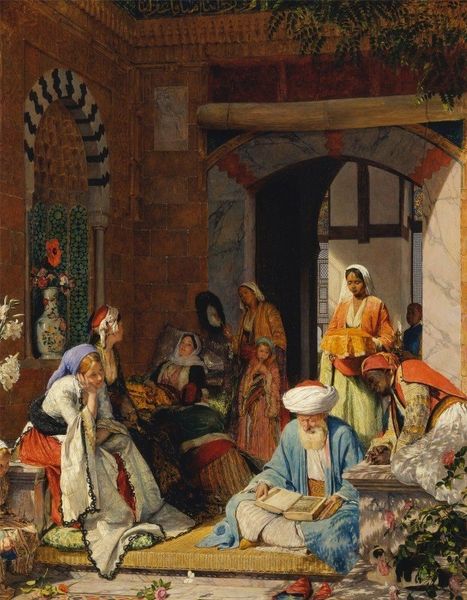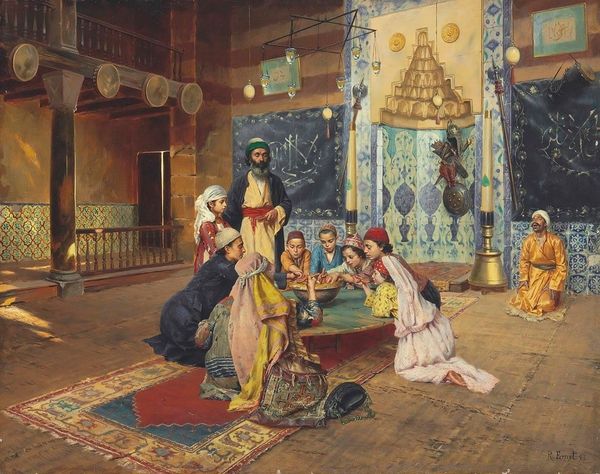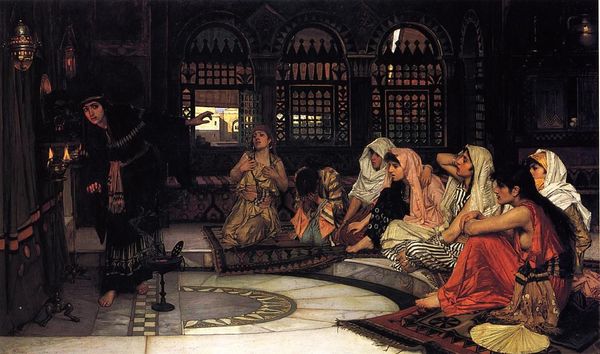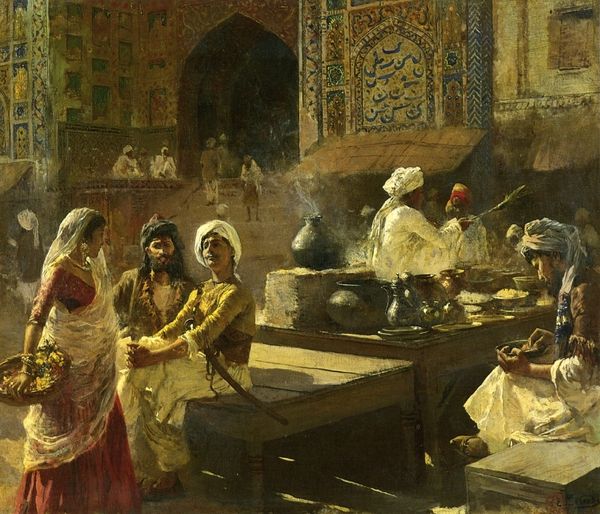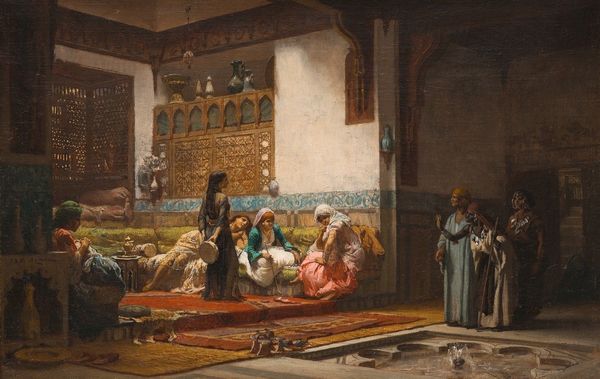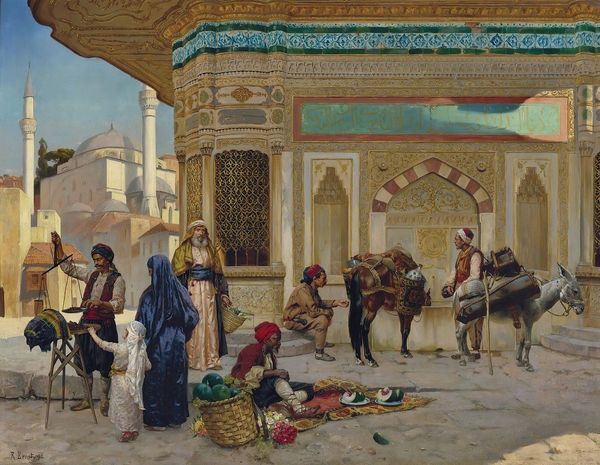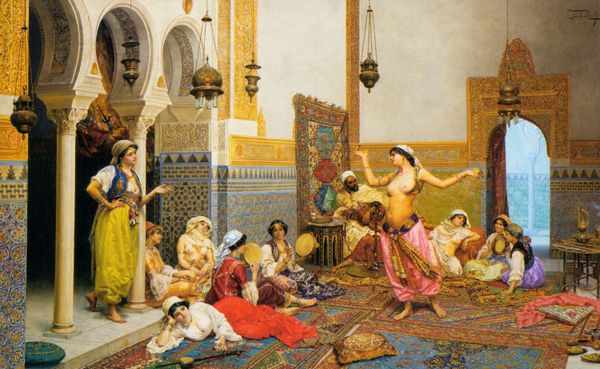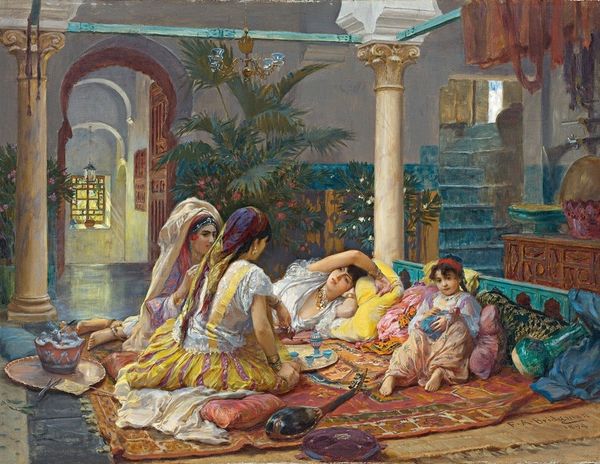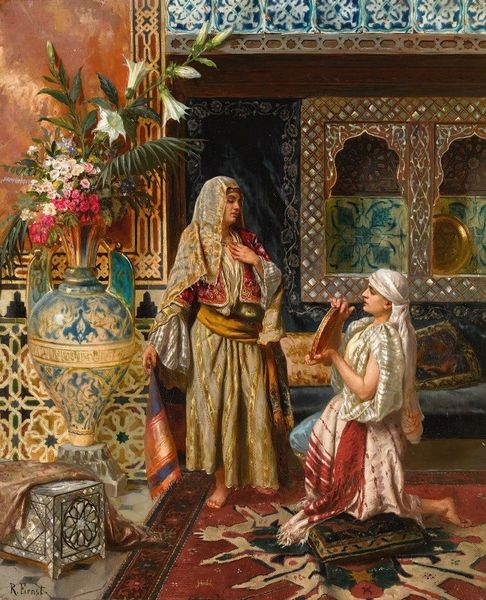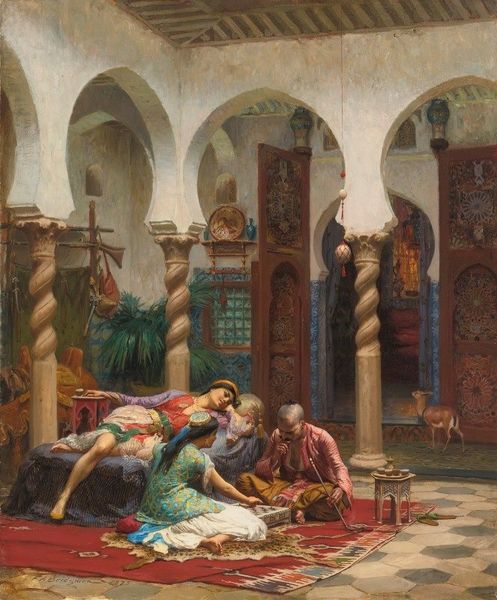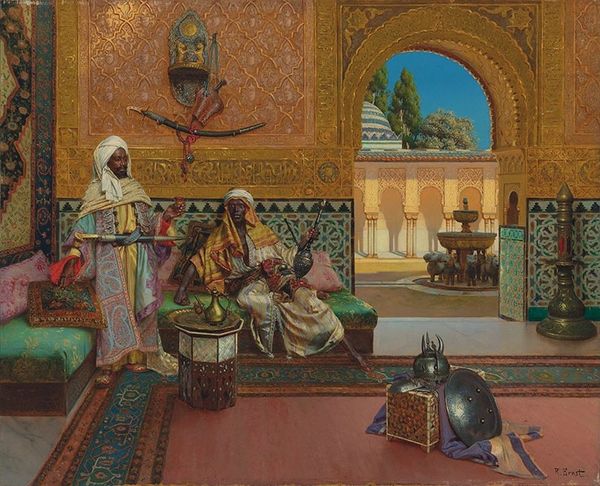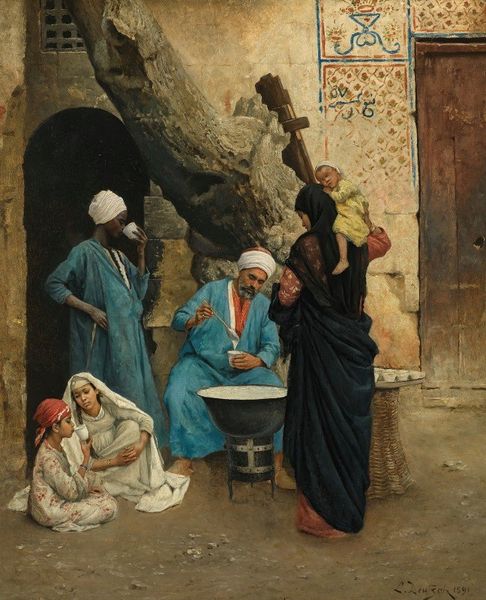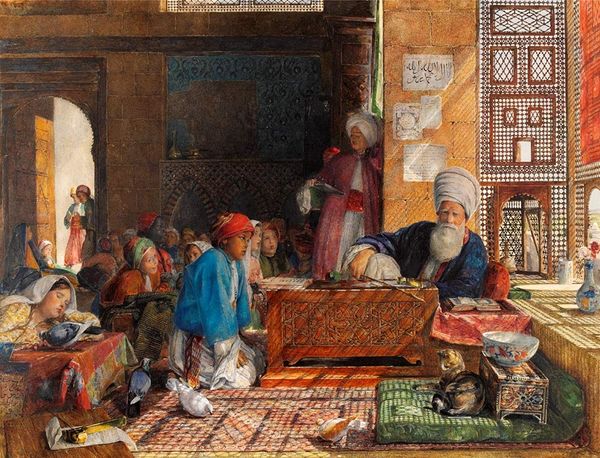
painting, oil-paint
portrait
figurative
painting
oil-paint
figuration
oil painting
orientalism
genre-painting
academic-art
Copyright: Public Domain: Artvee
Curator: Here we have “Interieur d’un palais Arabe,” an oil painting. It depicts a group of women within a palace setting. Editor: Immediately, the composition strikes me as a study in leisure and light. The way sunlight floods the space, filtering through the latticed windows, creates this almost dreamlike quality, juxtaposed against the apparent labor of women crafting textiles. Curator: The artist focuses meticulously on the play of light and shadow to enhance the textures—the carpets, the garments, the architectural details—giving a sense of depth and richness, a veritable orientalist fantasy. The geometry creates this visual interest as the foreground women intersect and break up this picture plane of linear edges of the room architecture. Editor: True, but looking through a critical lens, one could argue the work also romanticizes colonial power dynamics and reduces the "Orient" to an exotic, sensual playground for the European gaze. It seems worth mentioning these scenes rarely reflected lived realities for most women in those settings at that time. It's important not to disassociate how this fantasy served Western imperialism. The very placement of the women at labor inside is itself meant to display an internalized gender binary in an oriental setting that suggests something about cultural differences. Curator: Regardless of whether you perceive Western imperial sentiment in the details, it's undeniable that Bridgman displays remarkable control of perspective and form, drawing on academic artistic tradition, yes, but also demonstrating keen observation. See how each figure occupies unique space? Editor: Perhaps—but whose gaze does that serve? It is undeniably pretty. And that's its trick. How do we deconstruct this artistic rendering in order to reflect more truthfully about the realities of that era? This serves almost as cultural documentation of that past gaze of an "oriental" reality through a very gendered lens, if we think about women making items "in private" at the home versus "public industry". It perpetuates and preserves that legacy for the present viewers. Curator: An interesting view; nonetheless, analyzing the painting purely from the perspective of color, form, and space has helped reveal its intrinsic technical merits regardless of historic intent. Editor: Understanding historical context only helps reveal this painting's complex layers that extend beyond these orientalist archetypes! It calls upon a cultural and political awareness even now, when orientalism exists as this "beautiful rendering."
Comments
No comments
Be the first to comment and join the conversation on the ultimate creative platform.
